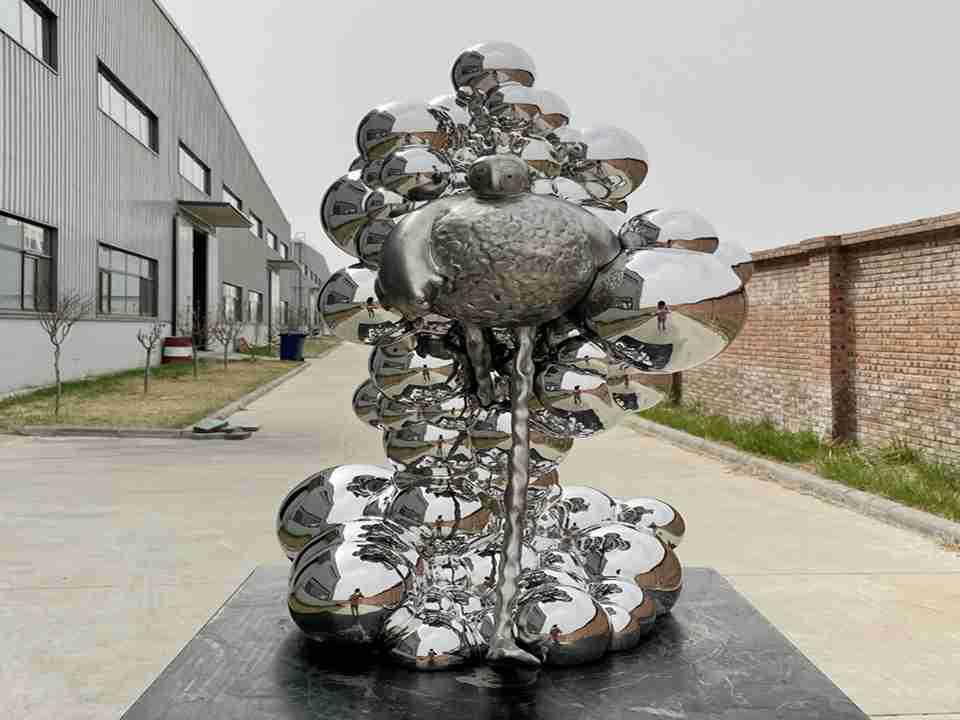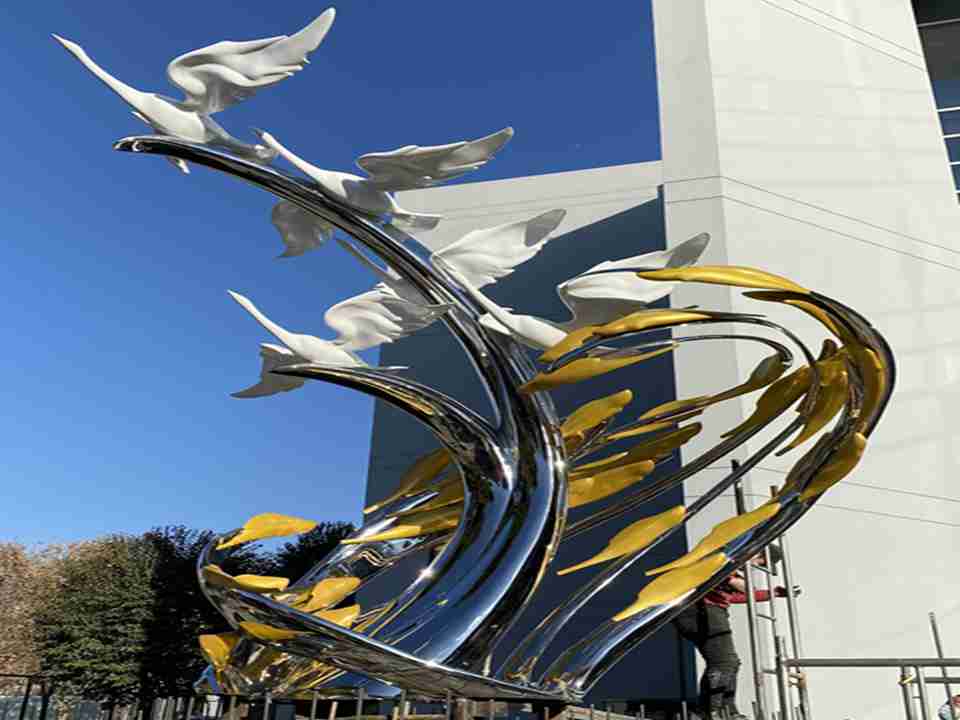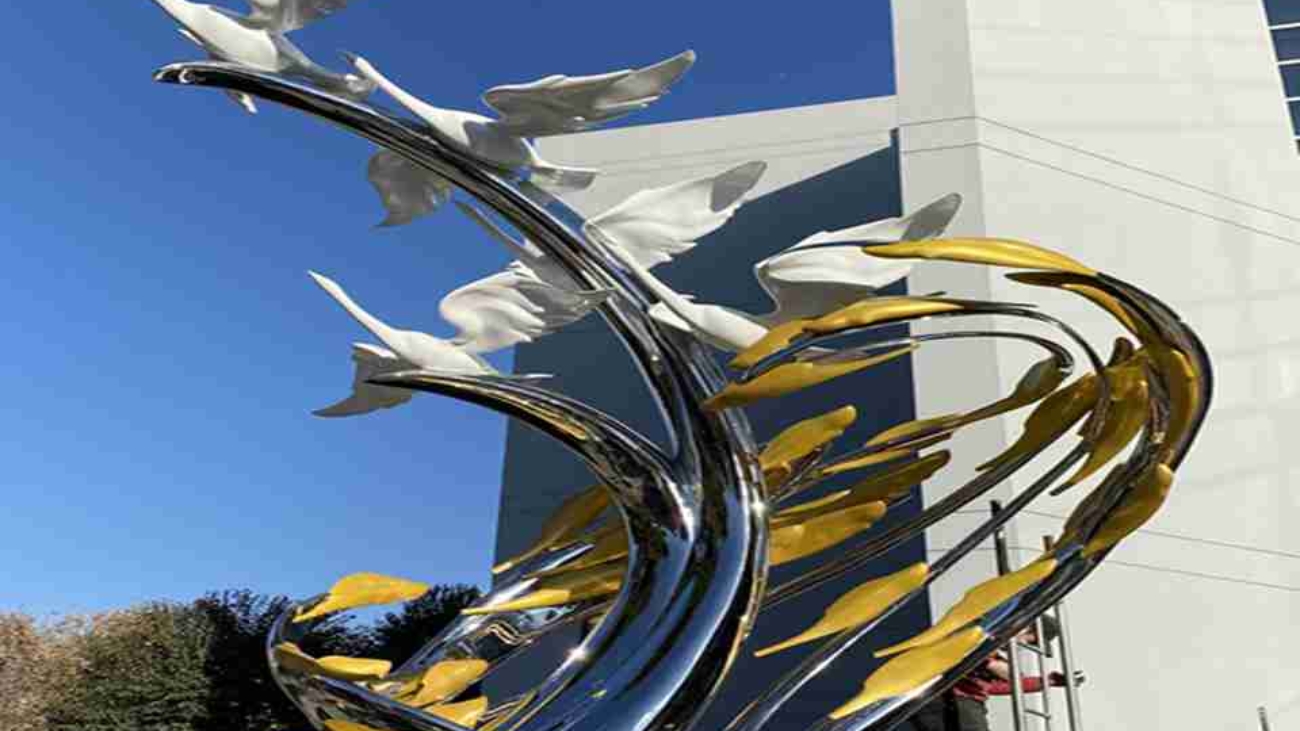In the past, emperors used iron statues to show how powerful or religious they were. Now they are moving canvases that tell stories about people from all over the world. Iron statues made today change how cities look by combining new, cutting-edge design with old-fashioned craftsmanship p.You can’t find this kind of sculpture in museums like you can with normal ones. Some of the ways this kind of art is changing are that it uses digital tools, is better for the environment, and works with people from different fields. It could be anything from little statues in gardens to big ones in parks.

The History of Iron Statues: How They Started and Where They Are Now
Blacksmiths used to make iron statues of soldiers for religious reasons. They used to use hand-forging and sand casting, which were more about making things strong than getting the details right. However, artists now utilize robotic welding and 3D scanning to create textures that appear almost real, such as moving fabric or weathered skin.
A big change was using Corten steel, which is an alloy that protects itself and gets a rustic patina over time. This material not only makes statues easier to clean, but it also changes how they look over time. Antony Gormley’s Another Place in England is an example of this kind of mixing. It turns old iron into 100 cast-iron people who can move around.
Iron Statues Show What Makes a City Special
Cities all over the world buy iron statues to show that they are modern and remember their history. The Digital Pavilion in Seoul is a new building that has both old-fashioned metalwork and LED screens that you can touch. When you cut iron panels with a laser, this is what they look like. For example, the Gateway in New York City is made of rusty iron and has abstract shapes that stand for strength and immigration.
Architects and sculptors are working together more and more to make statues that serve a purpose. For example, the Iron Tree in Singapore has holes in its iron leaves that let rainwater through and give shade. This shows that iron statues can be both pieces of art and parts of nature.
Changing the Story to Make Iron Statues Last LongerPeople care more about the environment now, so artists are using more recycled materials. More than 70% of the iron used to make statues today comes from metal that factories throw away. This keeps trash from going to landfills. People used to use chemicals that were bad for the environment to protect metal. They now use new finishes that are good for the environment, like oxide coatings.
Iron statues are good for the environment because they last a long time. Other things don’t last as long. Iron, on the other hand, can handle bad weather, so art will last for hundreds of years . Jaume Plensa and other artists have used this strength to make iron buildings in the city where animals can lie, too.

It’s creative to mix the old and the new.
You need to know a lot about a lot of different things to make iron statues that look like they were made today. Artists and metallurgists work together to test the metal mixtures to make sure the pieces are strong and flexible. People can use digital tools like VR prototyping to try out big ideas in virtual spaces before they make the real thing. This doesn’t need as many things.
The Iron Symphony project in Rotterdam is a well-known example. There, 15 artists used AI algorithms to make patterns of musical notes that were then put into iron panels. The exact hole drilling that makes the installation sound shows how technology can help artists find new ways to show off their skills without losing them.
Figuring out how to make iron statues
Things are getting better, but it’s still not easy to make statues out of iron. Prices for custom designs are still too high, but modular kits and shared access to a foundry are making it easier for everyone to make things. People’s thoughts change, too. Some people believe that digital tools make things that are “handmade” less real, while others believe that they help small studios around the world compete with each other.
The Forja Viva workshop in Mexico is just one of many places where people can learn how to forge and keep their skills sharp. Even though technology is always changing, master craftsmen teach apprentices old-fashioned skills like chasing and repoussé to keep cultural traditions alive.
Iron Statues in the Future: Fun and Interesting
Iron statues will be able to do things like use augmented reality and sense motion in the future. Statues change shape when it rains or when people touch them. Biophilic designs that are based on natural patterns, like neural networks or cellular structures, will also be popular in public places. This will help art and science work together more easily.
Artists can show who they are by making iron statues. They are interested in the metallurgy of their ancestors, and they also like new technologies and ways of life that are good for the environment. We think of metal as a way for people to talk about culture, like big statues in parks or small sculptures in gardens. Cities and collectors both love iron statues, which are a classic but always-changing example of human creativity.
You should hire artists who can use their technical skills and creative vision to make an iron statue that looks both old and new. Let your iron show off how great it is. You are strong, creative, and proud of your culture in every line and curve.



Add a Comment